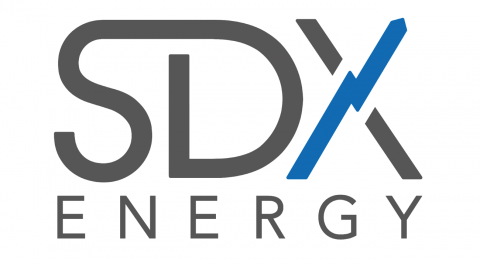As the crude oil prices are tremendously increasing; jumping above the $100, the development economics are totally changing. Minor, and mature or Brown Fields assets have considerable economic value evolved dramatically. Given the fact that technology is evolving exponentially enough to support non traditional hydrocarbon assets development, and to extremely pushing the recoveries to the highest limit.
As the energy demand is growing world wide, the hydrocarbon suppliers are taking the role to fulfill the market consumption. Given the fact that the huge oil discoveries are diminishing, increasing recoveries from the existing g assets would be a valuable compensation parameter to equalize the demand and supply equation.
In this regard, this article highlights the evolution of Brown Fields development and redevelopment world wide and the technical efforts exerted in this area.
First, it is very important to mention three important terms and definitions used in the areas of development and redevelopment of Brown Fields.
-
Brown Field: It is almost new expression in the oil industry, and it has been used alternatively with the expressions of “Old Field”, and “Mature Field”. The “Brown Field” in specific is expressing the oil field that has more than one cycle of development and production decline.
-
Reserves: are the economic recoverable hydrocarbon volumes under the contracting terms and conditions and under the government regulations of HSE.
-
New Oil: are the reserves that can be added to the field booked values at any stage of its production life.
Advantages and Opportunities
The most important advantages of the Brown Field are summarized in the following points;
-
The already existing of infrastructure, which has positive impact on saving time and money, and consequently improving the economics of the development of the field
-
The existing historical data already interpreted
-
Most of these fields still have potential to be developed and exploited
Given the above mentioned points, the main challenge is how to identify and quantify the Brown Fields potentials, then to rank these potentials and opportunities.
Sources of new reserves in mature fields are mainly acquired through the discovery of new reservoirs in these fields and the extension of the already known reservoirs.
The other source of the additional reserves is the revision of the booked reserves through the aim of improved recovery, and improved economic setting, and the improvement of the interpretation of the reservoir as a result of new data acquisition.
What has been achieved?
The Energy Information Administration (EIA) had accomplished research work concerning reserves estimates, and introduced the term “Ultimate Recovery Appreciation” (URA), which is defined as the increase of economic ultimate reserve over time.
Energy Information Administration conducted a research concerning the reserves tracking over the top largest 200 fields’ world wide, covering the period from 1977 to 1993.
The findings and results of the research are shown on the plot graph below.
Almost 44% of these fields have increased reserves as double to triple times, while around 22% of these fields have increased reserves as triple to four times, and 9% of these fields have increased reserves for more than four times.
Why opportunities are emerging?
Why opportunities emerge in “Brown Field” in particular, many reasons and factors could be combined to show evidence of potential of opportunities of development, such as,
No.1 the low natural energy of some reservoirs, which consequently might lead to depletion of the reservoir pressure, and these depleted pressure reservoirs are proper candidates for artificial energy support projects, and could be good candidates for horizontal drilling to develop the oil zone, and might be candidates for artificial lifting as well.
No.2 Insufficient and Inefficient sweep of the secondary recovery fluid injection and consequently the resultant is upswept portions of the reservoir, areal and vertically.
N0.3 Conventionally, and generally, most of the operators design the production facilities, and the artificial lifting to maximum level of 90% W.C, while in reality, some reservoirs such as the oil wet reservoirs, a considerable amount of movable oil remain in reservoir matrix as the reservoir water saturation still relatively low, however the W.C is high as 90%.
N0.4 Technology evolution is playing an important role in the “Brown Field” development. It has various types and functions, such as 3D applications, open hole logging such as Magnetic Resonance, and MDT/RDT and fluid sampling. These technologies, for example, and others, are providing valuable data which positively impacting the reservoir interpretation and consequently improving the recovery values.
N0.5 Data surveillance and acquisition are very crucial for mature field development. Surface facilities de-bottlenecking is adding considerable positive value for the hydrocarbon recoveries.
No.6 Market development and oil price are affecting the economics and the projects evaluation, and consequently playing very important role in Brown Field development.
Recognizing Opportunities
Production and dynamic data could easily provide clue for the potential of opportunities and chance of improvement. Production decline behavior and character provide a solid indication of reservoir connectivity and compartmentalization, and driving mechanism, and more important is the comparison of the actual decline versus the predicted.
The operating conditions, such as artificial lift optimization and facilities expansion to handle larger volumes and quantities of fluid and gas could positively impact the hydrocarbon recoverable values.
The economic parameters like oil and gas price and the operator economic assessment indicators such, NPV, Pay out time, DROI, IRR, and others are main factors that could impact the value of the Brown field development.
Reservoir heterogeneity is very important aspect of the reservoir character and very much controlling its development scheme. Generally, most of the reservoirs are heterogeneous.
The level of the interpretation and addressing of the heterogeneity is mainly dependant on the level of details of the integrated study of the reservoir.
The deeper is the integrated study, the more is the heterogeneity of the reservoir to be revealed. Heterogeneity of the reservoir has impact on the production and pressure behavior on different levels.
The first level is the heterogeneity effect on the well bore; as the matrix permeability changing around the well bore in the vertical profile, and consequently impacting the vertical fluid distribution and saturation profile. Permeability variation across the height of the hydrocarbon zone in the well bore controlling the fluid flow distribution along pay zone.
The second level is inter-wells, as heterogeneity impacting and affecting the sweep efficiency between the wells mainly as function of permeability variation in areal and vertical direction in the distance between the injector and producer.
In the same fashion and logic heterogeneity is affecting the fluid flow pattern and direction following the highest permeability direction, and consequently all of these factors are affecting and generating the configuration of the drainage area of each well.
The third level is the effect of the heterogeneity over the field wide. The main effect of the heterogeneity on field wide is the hydrocarbon in place volume and its distribution in the areal and vertical directions and consequently controlling the production trends variations among the field wide
By: Eng. Ahmed Hassan
Chief Reservoir Engineer, PICO International Petroleum







